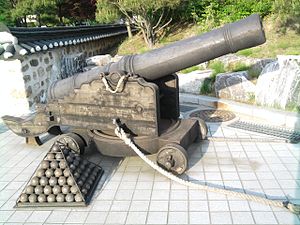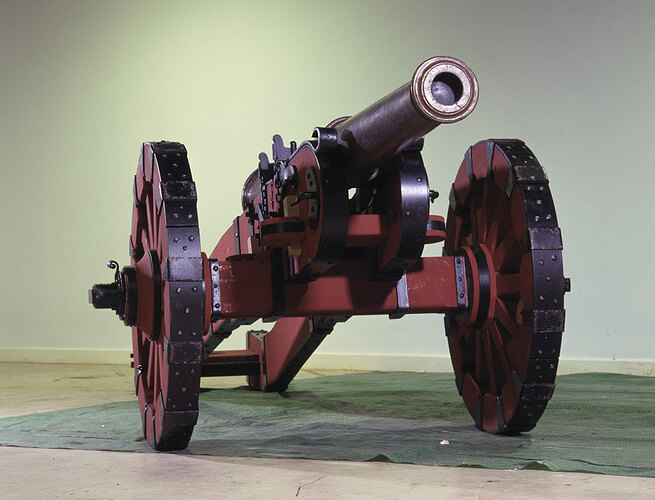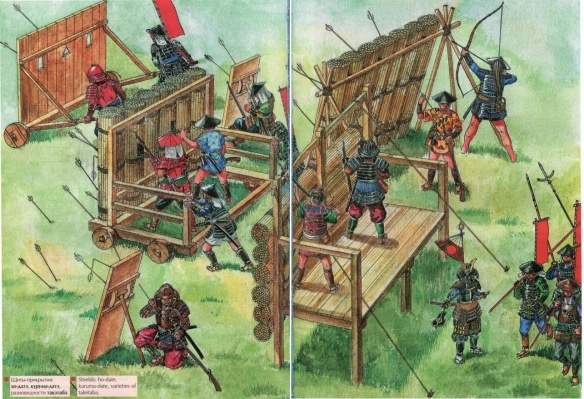I guess this will be my part 2 of suggestions for new units that could be trained by the older civilisations in the game before the Definitive Edition. If you want to check out my first suggestion of new units that could be added to the older civilisations, then click on this link that is shown below:
(1 new trainable unit for the Aztecs, Haudenosaunee, Incas and the Indians)
British
(1) Saker: “Medium artillery. Fires a cannonball that will bounce off the ground. Better against infantry than buildings.” (In-game description).
The Saker will replace the [Falconet] for the British and will be available in the Fortress Age. The description that has been provided above reveals everything for what will make this cannon stand out from the rest of the cannons in the game, where it will shoot a cannonball that will bounce off the ground which will cause additional damage to enemy units. It can occupy 5 population slots but be more expensive than the Falconet. In order to make this unit look special in appearance, apart from a bigger size, is that the cannon in-game could show signs of oxidation, where it has a blue-green patina on the surface layer, as the Saker cannon was made out of bronze.
The Saker was a medium cannon that was developed in the early 16th century and often used by the English. It shot a certain type of a cannonball that was intended to bounce along the ground to cause as much damage as possible, this type of explosive shell was apparently rare before the 19th century. The cannon was still used in the late 17th century and beyond by the English. More information and sources for this cannon can be found on the Wikipedia.
Dutch
(2) Flankeur: “Outstanding ranged infantry that specializes in flanking. Moves quickly and has a chance to cause critical damage to enemies.” (In-game description).
The Flankeur will serve as an additional [Skirmisher] type unit for the Dutch that will have a shorter range than the regular Skirmisher. Using these soldiers will promote a more aggressive playstyle as the Dutch, where the Flankeur can quickly engage an enemy player’s army due to their fast movement speed.
The Flankeur unit is based on the Netherland army’s 1st and 6th flank battalion which participated in the Battle of Waterloo (1815). These flank battalions were apparently the elite of the Netherland army.
The name is based on the “Flankeur” unit that is available to the Dutch in the “Wars of Liberty” mod for Age of Empires 3, so I did not come up with the name. However, the idea of making the Flankeur unit into a fast moving [Skirmisher] that deals critical damage is something I came up with my myself.
French
(3) Aureate Siege Cannon: “Splendid heavy artillery with devastating firepower. Effective against both buildings and infantry.” (In-game description).
The Aureate Siege Cannon will replace the [Heavy Cannon] for the French and will be trained from the [Factory] building. If the French player uses the [Gribeauval System) card they can then also train the Aureate Siege Cannon from the [Artillery Foundry] building as well. The word “Aureate” is another word for “Golden” and I thought it could be a fitting name given that bronze has a similar appearance to gold.
This artillery unit is based on the 24-pounder siege cannon also known as the “Cannon de 24 Gribeauval” from the Gribeauval System. This artillery piece seems to have been the biggest cannon of them all from Gribeauval’s artillery system.
Chinese
(4) Composite Cannon: “Chinese cannon forged from both iron and bronze. Better against infantry than buildings.” (In-game description).
The Composite Cannon will be the Chinese counterpart of the [Falconet] and will serve as a more population efficient artillery unit by occupying 5 slots in comparison to the [Flying Crow], which takes up 7 population slots.
The cannon itself is based on the “Hongyipao” which was a cannon used by the Chinese during the early 17th century to 19th century. The reason as for why I renamed it to the “Composite Cannon” is because I am not sure if it is safe to call it that because the original name had a derogatory meaning against Dutch people. And the Wikipedia doesn’t give a clear clarification if this is either the respectful name or not.
“Hongyipao” means either “Red Coat Cannon” or “Red Barbarian Cannon”, where the latter name was its original name. The name derives from the cannons supposed Dutch origins, as the Dutch were called “Red Haired Barbarians” in southern China. The Jurchens were the ones who renamed it to the “Red Coat Cannon” when it entered their arsenal because they found the term “Barbarian” to be insulting.

Japanese
(5) Kaidate: “Japanese war mantlet. Can be used to shield your army from enemy fire.” (In-game description).
The Kaidate will be available in the Fortress Age and be trained from the [Castle] or through their special unit [Shogun Tokugawa]. Just like the [Mantlet] used by the Haudenosaunee, the Kaidate will fulfill a similar role to it. It will occupy 2 populations slots and will serve as a siege unit.
According to a website called “Weapons and Warfare” (Japanese Siege Weapons | Weapons and Warfare) The “Kaidate” and the “Sakamogi” (Another mantlet variant) was used by the Japanese during the age of gunpowder were these protective walls were able to resist explosive shells. Kaidate apparently means “Shield Walls” in Japanese while “Sakamogi” means “Stacked Wood”. If you scroll all the way down to the last paragraph for the “Early Fortifications” title on this website you will find a short description of these shield walls.
I tried to include a sketch from the link that showed both “Kaidate” and the “Sakamogi” but was unable to do so. If you want to see how they look like then check out the link and keep scrolling down until you see the sketch with mantlets. The “Kaidate” is the one in the top left corner of the sketch while the “Sakamogi” are the brush barricades.

